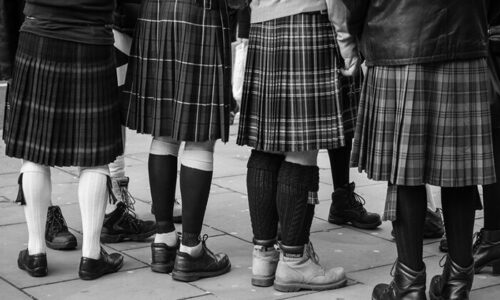Weddings are a celebration of love, culture, and sometimes even quirky fashion choices. Picture this: guests dressed in elegant gowns and sharp suits while one brave soul struts in proudly wearing a kilt. The thought may raise eyebrows or spark interest—especially when that wedding takes place in the heart of Ireland. But just how acceptable is it to don a kilt at an Irish wedding?
Kilts carry deep roots in Scottish tradition, representing heritage, pride, and formal wear wrapped in plaid perfection. Yet, as we dive into the world of nuptials, we find that Irish weddings boast their unique charm with rich customs and lively festivities. From stunning venues to vibrant celebrations, they draw countless couples—and perhaps a few kilt-clad guests—into their enchanting embrace. So grab your favorite beverage and let’s explore whether you can make that statement piece work on such an auspicious occasion!
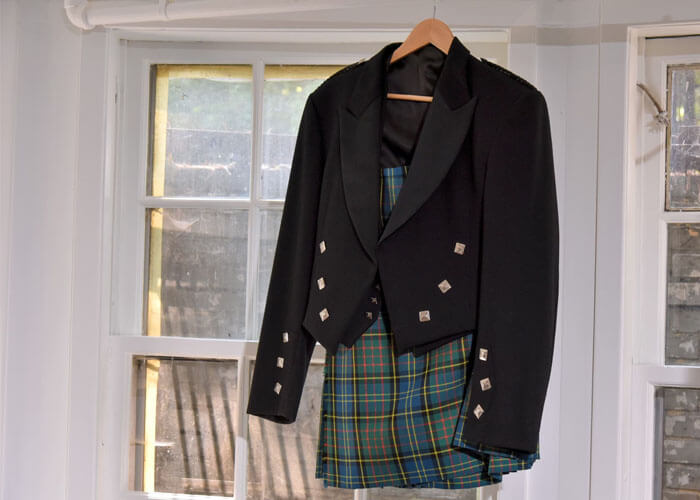
The Kilt: A Traditional Garment
A kilt is more than just a piece of clothing; it’s a symbol steeped in history and cultural significance. Originating from Scotland, the kilt is a knee-length skirt-like garment made of pleated tartan fabric. Initially worn by Gaelic men in the Highlands, this traditional attire has roots that trace back to the 16th century. Early designs were often referred to as “great kilts,” which wrapped around the body and provided warmth during cold weather. Over time, these evolved into today’s modern kilt, featuring intricate patterns representing familial clans, regions, or even personal preferences.
In Scottish culture, wearing a kilt is an opportunity to show pride in one’s heritage. It’s typically donned during significant events such as weddings, graduations, or Highland Games. Traditionally paired with a tailored jacket and waistcoat, along with essential accessories like sporrans (a small pouch), ghillie brogues (lace-up shoes), and a distinctive belt for holding all those celebratory snacks (let’s be honest here!), the ensemble exudes elegance while honoring ancient customs. Many Scots also embrace their national dress on special occasions to showcase their distinct clan identity—imagine attending your friend’s wedding only to discover you’re standing next to someone sporting plaid from the same lineage!
Unlike suits or dresses that can blend into any given occasion, kilts command attention and spark conversation wherever they go. Their unique aesthetic often inspires guests who might not otherwise consider traditional garb for formal settings. Plus, there’s something inherently charming about seeing someone confidently rocking pleats at an event meant for loving connections; it sends a message of individuality while respecting deep-rooted traditions.
As you ponder whether you can strut your stuff in a kilt at an Irish wedding—or if it would simply raise some eyebrows—it’s helpful to appreciate what makes this garment so beloved across various cultures today. To further understand its appropriateness within different contexts—including magnificent celebrations beyond Scotland—you can start feeling comfortable exploring what may lie ahead for that big day!
Understanding Irish Wedding Attire
When it comes to Irish weddings, the attire is often as lively and vibrant as the events themselves. Traditional looks for brides usually feature stunning gowns adorned with intricate lace and beadwork—often incorporating elements unique to Irish design. Grooms may opt for classic suits, typically in shades of green or earth tones, reflecting Ireland’s lush landscapes. Meanwhile, guests are encouraged to dress smartly but still embrace a bit of character; think colorful dresses or tailored jackets that show off some personality yet remain respectful of the couple’s big day.
Interestingly, when comparing traditional Irish wedding attire with its Scottish counterpart, nuances start to emerge. While kilts are a beloved staple at Scottish weddings—a symbol of clan heritage—they don’t quite hold the same status in Ireland. In an Irish setting, you’re more likely to see men in suits or perhaps casual tweed ensembles inspired by pastoral scenes rather than clinging to tartan traditions. Though both cultures celebrate their unique histories through clothing, it’s essential to distinguish each country’s approach; after all, there’s a fine line between wearing a kilt and risking being labeled a sartorial rogue when attending an event steeped in Irish customs.
Contrary to the common belief that such choices hinge solely on male guest attire decisions, women also showcase traditional styles that reflect their heritages at these joyful gatherings. A popular choice is the beautiful ‘Celtic knot’ motif woven into dresses or accessories—an emblematic nod to their rich heritage. As guests ponder what they’ll wear (in either country), they would do well to consider the venue’s ambiance as well as regional specifics—even within Ireland itself—where coastal weddings might invoke sea-inspired hues while countryside ceremonies draw upon warmer earthy tones.
As you navigate your wardrobe options for an Irish wedding, keep in mind that honoring traditions doesn’t mean compromising on individuality! Whether you’re selecting that elegant floral print dress or hopping into tall boots fit for muddy fields—you’ll be celebrating love not only through fashion statements but also by blending personal style seamlessly with cultural identity at this unforgettable festivity!
See Here: See Here: Argyle Kilt Jackets: Black, Navy & Grey Tweed | For Sale
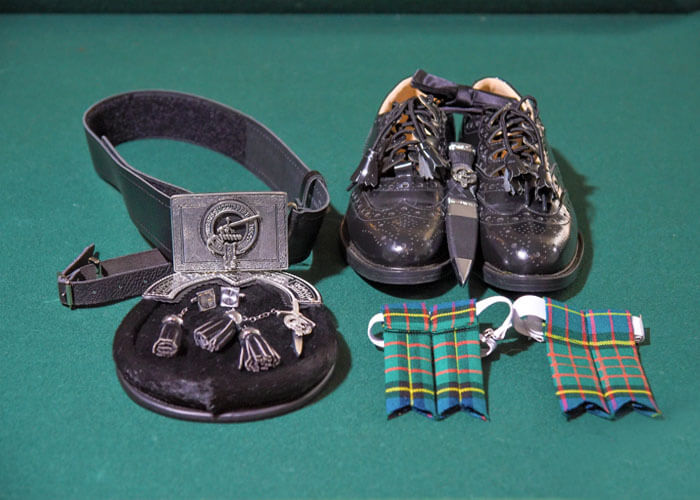
Kilts Across Cultures
When we step into the enchanting world of international weddings, it becomes evident that traditional attire often takes center stage, celebrating cultural heritage while embracing individual expression. Just as a kilt can stir up discussions at an Irish wedding, other cultures showcase their vibrant garments, transforming matrimony into a kaleidoscope of color and tradition. From the brilliant saris in Indian ceremonies to the sleek suits and hats at Nigerian weddings, unique clothing offers a peek into diverse customs that unite guests on these joyous occasions.
Take for instance Japanese nuptials where the bride might don a stunning kimono adorned with elaborate patterns and colors that symbolize prosperity and happiness. This traditional outfit is not merely fashion; it’s woven with significance reflecting centuries of culture. Also, Greek weddings delight attendees with brides who may choose to wear a richly decorated gown called “φόρεμα” (foreman) paired with intricate jewelry symbolizing love and commitment. Such instances remind us that many cultures embrace distinctive attire, offering guests the freedom to flaunt their roots—or simply enjoy a good excuse to get dressed up!
In today’s global landscape, we’re becoming increasingly open-minded about mixing styles from around the world. Recent trends have highlighted how various traditions influence one another: A Scottish groom could be seen strutting down the aisle in his family’s tartan alongside groomsmen clad in sharp blazers and colorful bow ties unique to American-style weddings. Similarly, some couples opt for themed celebrations inviting multicultural attire—imagine a guest showing up in an elegant Vietnamese Ao Dai amidst classic Western tuxedos! It emphasizes that clothing is far more than just fabric; it tells stories of love, heritage, and joy.
Ultimately, wearing cross-cultural outfits like kilts at events such as Irish weddings highlights not only personal flair but also respect for various traditions involved in tying the knot. As each piece of clothing carries its meaning and history, allowing these expressions fosters unity among friends and family while adding sparkle to an already magical day!
When Is a Kilt Appropriate to Wear?
Deciding whether to don a kilt for an Irish wedding can be a whimsical yet weighty question; after all, you don’t want to accidentally turn up in what essentially amounts to a fancy skirt if it’s not the right vibe. Generally speaking, there are certainly occasions where wearing a kilt is not only acceptable but may also be actively welcomed (think of it as your ticket into the ‘cool guest’ club). For starters, outdoor or rustic-themed weddings—whether nestled deep in the beautiful Irish countryside or against seaside cliffs—set a perfect backdrop for flaunting those pleats. The natural settings invite playful attire choices, and a well-placed kilt can blend harmoniously with sparkling party lights and fairy-tale settings.
Moreover, kilts tend to fit right in at weddings that embrace Scottish-Irish cultural elements. If the couple has shared their appreciation for both traditions during planning—perhaps mentioning bagpipes in their ceremony or opting for traditional music that includes touches from both cultures—a kilt could serve as an exciting nod to that blending of identities. Inquire ahead and see if there’s any planned theme around this cultural fusion; shouldn’t every festivity include exceptional fashion statements?
However, it’s essential to weigh formality when deciding on your outfit. A black tie event calls for something more sophisticated than just any old tartan—even if the idea of a regal-looking engagement might tempt you. In such cases, aim for kilts made from glen plaid or darker hues paired with formal accessories like waistcoats and crisp dress shirts. And while we all adore comfort (not having to worry about busting out of tight pants), be sure that you’re projecting an image that aligns with how punctilious you’d like to appear—that cocktail hour snack should never come between you and sharp style!
In summary, take stock of several key factors: setting (rustic vs. urban), the couple’s preferences regarding cultural influences, and desired formality levels—all while ensuring you’re making your unique style statement! Keep these points top-of-mind as you prepare for one memorable night; who knows—you may start the trend of showing up in a style that’s authentically yours.
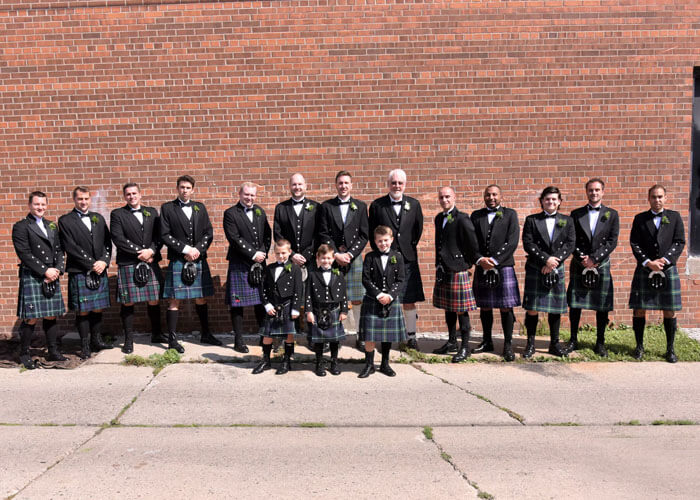
Choosing the Right Kilt for an Irish Wedding
When it comes to selecting a kilt for an Irish wedding, it’s essential to keep in mind the overall ambiance and theme of the celebration. While kilts are deeply rooted in Scottish heritage, they can seamlessly fit into the colorful tapestry of Irish weddings with some thoughtful choices. Consider the colors and fabrics that evoke the spirit of both cultures; for instance, earthy tones or shades that echo Dublin’s lush greenery are perfect choices. Think mossy greens or vibrant reds—these hues not only honor the wedding’s location but also bring out a certain charm against a backdrop of rolling hills or historic castles.
Tartan patterns play a significant role too; while traditional tartans signify clans in Scotland, opting for subtle or less intimidating patterns can help meld your outfit into an Irish setting without overshadowing other styles at the event. Neutral, understated tartans or even bespoke options that incorporate colors from the couple’s chosen wedding palette can be striking yet respectful. If you’re feeling particularly adventurous, you might even consider using floral motifs popular in Irish design—imagine intricate Celtic knots woven delicately on your kilt!
Accessories are another fun way to enhance your kilt ensemble while adding a touch of personal flair. A sporran (that practical pouch worn on the front) can serve as an eye-catching focal point if you choose one that complements your tartan. Opting for something more whimsical—like a sporran adorned with shamrocks—for an Irish wedding could spark joy and laughs among guests! Additionally, consider pairing your outfit with knee-high socks featuring stripes that match your tartan and maybe even a classic letterman-style jacket or waistcoat to complete the look harmoniously.
Ultimately, choosing the right kilt for an Irish wedding is about balancing tradition with individual style. Pay attention to elements like color schemes and accessories while respecting cultural nuances; this way, you’ll not only look dapper but will also contribute positively to the celebration’s joyful atmosphere! So grab those measurements, pick out some charming accessories, and get ready to strut your stuff down that aisle—or dance floor—with pride!
Potential Faux Pas: What Not to Do
When it comes to wearing a kilt to an Irish wedding, guests must tread carefully—lest they step into the murky waters of fashion faux pas. One of the most common blunders is assuming that a kilt is a one-size-fits-all garment. Unlike jeans, kilts come in various styles and fits, and choosing the wrong kind can lead to some unfortunate wardrobe malfunctions (we’re talking pleats where pleats should not be). Remember, there’s a world of difference between a casual day kilt and a formal evening variant. When in doubt, take cues from the wedding’s invitation regarding formality; if it’s a black tie, leave your plaid cap at home and opt for something more polished.
Another pitfall is ignoring cultural sensitivities surrounding traditional attire. While many might find kilts endearing or quirky, guests should pay attention to any potential offense it may cause to the couple or their families. Some couples might want their wedding steeped in entirely Irish traditions—complete with delicate lace gowns and classic suits—where introducing a Scottish element might feel out of place. It’s always advisable to circle back with the newlyweds or wedding planners about attire preferences before making your fashion statement; after all, nobody wants to be “that person” who unintentionally steals focus from the bride!
Additionally, accessorizing can make or break your kilt experience at an Irish wedding. Though wearing sporrans (the little pouch worn with kilts) can add character, opting for one that’s overly flashy or mismatched could draw undue attention and create awkwardness during photoshoots amidst flower crowns and fairy lights. Subdued colors are generally preferable unless you’re intentionally going for a comedic effect—but even then, proceed with caution! Ultimately, keep in mind that your look should complement rather than outshine the main event—or else you risk becoming more meme-worthy than memorable.
In summary, while donning a kilt can indeed offer flair and charm at an Irish wedding, it requires thoughtful consideration and respect for both cultures involved. Avoid misguided embellishments and stick to tasteful choices that honor tradition; this will ensure you arrive not just looking sharp but feeling confident on such an important occasion!
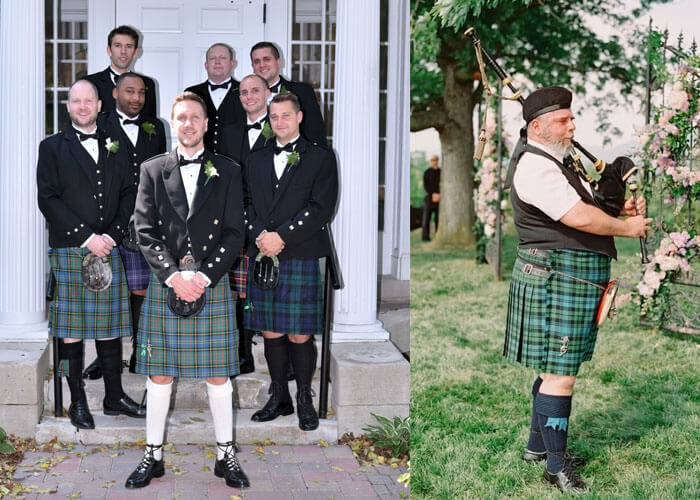
Breaking Stereotypes: Modern Takes on Traditional Dress
Gone are the days when kilts were solely associated with bagpipe bands and Highland games. Today, modern fashion has taken this traditional garment and spun it into a contemporary wardrobe staple that celebrates heritage while embracing individuality. Designers have been reimagining kilt styles using vibrant colors, innovative fabrics, and unique patterns that cater to today’s trendsetters. This evolution allows wearers to showcase their personality while holding onto the historic significance of the kilt, making it a fitting choice for an Irish wedding or any festive occasion.
Take David Beckham, for example—a style icon who is known for pushing boundaries with fashion. Frequently spotted in tailored kilts at events, he glamourizes the piece beyond its traditional roots, inspiring grooms and wedding guests alike to consider this bold option. Celebrities like him have paved the way for kilts to be worn confidently at various formal events, including weddings outside of Scotland. This embrace from popular figures not only breaks down stereotypes but also encourages a playful approach to attire options in diverse cultural settings.
Moreover, innovative designers are now focusing on sustainability by incorporating eco-friendly materials and practices into kilt production. Modern tweaks could include detachable pockets (because where else would you put your phone at a wedding?), adjustable waistbands for comfort post-reception buffet, or even smart textiles that help regulate temperature—perfect for those outdoor Irish ceremonies! These thoughtful adaptations make kilts not simply fashionable but also practical choices for contemporary guests wanting to blend tradition with modern flair without sacrificing comfort.
The bottom line? Wearing a kilt to an Irish wedding isn’t just quirky; it’s revolutionary! It signals a shift toward inclusivity in fashion—honoring traditions while rethinking how they can fit into today’s celebratory wardrobes. So why reserve such a marvelous garment strictly for Highland fetes? The modern kilt invites everyone into its fold—whether you’re twirling on the dance floor or juggling multiple pints of Guinness during the reception!
Guest Reactions: Embracing Fun with Fashion
Wearing a kilt to an Irish wedding can ignite a whirlwind of reactions, ranging from jovial laughter to unabashed admiration. Picture this: during a picturesque ceremony in the heart of County Kerry, one exuberant guest decided to go all out and donned a bright red kilt paired with shamrock-green socks. As he made his grand entrance, you could hear gasps followed by chuckles ripple through the crowd; it was as if he’d just strolled off the set of an action film where bagpipes became the soundtrack! His outfit instantly broke the ice, leading to new friendships forged over shared giggles about plaid patterns and fabric mix-ups.
Such spontaneous moments are par for the course when kilts enter the scene at weddings. In another case, a hesitant groom asked his best man to wear traditional Scottish garb to honor his heritage—but not without expressing concern about reactions from family members steeped in Irish tradition. To everyone’s surprise, once the music started and they hit the dance floor, guests were pulling him toward them for photos and high-fives! Seeing someone embrace their roots with flair fosters a casual atmosphere that loosens up even the most buttoned-up relatives. Let’s face it; it’s hard not to bond over shared laughter when you spot your cousin struggling dramatically against breezy conditions while also trying to keep his kilt under control!
Moreover, kilts often serve as conversation starters during receptions—nobody minds breaking away from small talk about potato croquettes when they can ask about one’s choice of tartan or how long it took to get laced into those shoes! It’s like being handed a golden ticket into lively discussions that dive deep into both Scottish culture and humorous mishaps involving wearing kerchiefs—and yes, those do happen more than you’d think!
Ultimately, donning a kilt at an Irish wedding isn’t just limited to fashion choices; it’s an opportunity for playful intermingling with fellow guests. Whether you’re regaling others at cocktail hour or challenging your Uncle Bob on who danced better after three pints (spoiler: it’s probably still going to be Bob), wearing a kilt accentuates that sense of fun and camaraderie inherent in celebrating love among friends and family. So why not add some plaid pizzazz next time? After all, humor combined with style has never gone out of fashion!
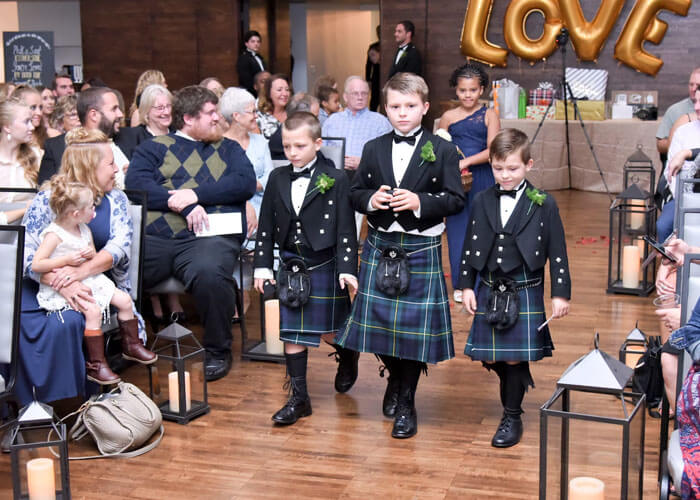
Conclusion: Embrace Tradition with a Twist
Wearing a kilt to an Irish wedding can be both stylish and respectful—if done right! Remember, kilts have deep roots in Scottish culture, but they can find an inviting place amidst the Celtic revelry of an Irish celebration. As long as you choose your fabric thoughtfully and avoid any faux pas, you’re sure to stand out for all the right reasons.
So go ahead! Honor the traditions of both Scotland and Ireland while adding your flair to the mix. Whether you’re going for classic tartan or a bold modern design, wear your kilt with pride. Let it enhance your experience on this joyful occasion—because there’s no better way to celebrate love than by having a bit of fun with fashion!
Checkout: Are Kilts Trending?
Frequently Asked Questions (FAQs)
Wearing a kilt to an Irish wedding can be a distinctive and respectful nod to Celtic traditions, blending both Scottish and Irish heritage. Kilts are often associated with Scottish culture, but they also have a place in Irish traditions, especially for those who have a connection to both. However, it’s important to ensure that the couple hosting the wedding is comfortable with this choice of attire. Since wedding styles can vary significantly, from traditional to modern, and from formal to casual, it’s always a good idea to check with the couple or the wedding planner to make sure your kilt will be appropriate for the occasion. A well-chosen kilt, particularly one that complements the wedding’s color scheme and overall theme, can be a tasteful and memorable addition to your wedding attire.
Wearing a kilt to an Irish wedding is generally not considered disrespectful, especially when done with the right intentions. The key is to be mindful of the cultural context and the couple’s preferences. While many might appreciate the blend of Scottish and Irish elements, some might have strong feelings about maintaining a distinctly Irish theme, especially if the wedding is very traditional. To avoid any potential issues, it’s wise to approach the idea with sensitivity and perhaps seek the couple’s opinion before making a final decision. In many cases, guests wearing kilts can add a unique and celebratory touch to the event, honoring the shared Celtic heritage of both Scotland and Ireland.
When selecting a kilt for an Irish wedding, it’s crucial to consider the formality of the event. For formal weddings, a more refined kilt, perhaps in earthy tones or a neutral tartan that complements the wedding’s color palette, is an excellent choice. Avoid overly casual or brightly colored kilts that might stand out too much or seem out of place. Instead, opt for a kilt that can be paired with formal accessories such as a waistcoat, dress shirt, and a tailored jacket. This ensemble can strike the perfect balance between tradition and elegance, making it an ideal outfit for a wedding.
Accessorizing your kilt for an Irish wedding can elevate your look and add a touch of sophistication. Traditional accessories like a sporran (the pouch worn at the front of the kilt), ghillie brogues (traditional Scottish shoes), and a well-tailored jacket can complement your kilt beautifully. Additionally, a simple tie or cravat can enhance the formality of your outfit. When choosing accessories, it’s important to keep them understated and elegant, ensuring that they enhance your overall look without overshadowing the kilt or drawing too much attention. The goal is to create a cohesive and stylish ensemble that aligns with the wedding’s atmosphere and respects the occasion.
Wearing a kilt will naturally make you stand out due to its unique and eye-catching style. However, this isn’t necessarily a bad thing, as long as your outfit is thoughtfully chosen and appropriate for the occasion. A kilt can be a stylish and fitting choice if it complements the wedding’s overall vibe. To ensure you don’t stand out in an unintended way, it’s important to avoid overly flashy or unconventional kilts. Instead, opt for a kilt that blends well with the event’s color scheme and formality. If done right, your kilt can be a conversation starter and a memorable aspect of the wedding, celebrated by the couple and other guests alike.
Kilts are especially appropriate for weddings that have a Celtic or rustic theme, particularly those that are held outdoors or in a setting that celebrates the couple’s heritage. Weddings that emphasize Scottish-Irish traditions or have a more relaxed and natural vibe can be perfect for kilt attire. However, for ultra-formal black-tie weddings, it’s important to ensure that your kilt ensemble is sufficiently sophisticated, possibly paired with a Prince Charlie jacket or other formal accessories, to match the event’s level of elegance. Ultimately, the appropriateness of a kilt will depend on the wedding’s theme, venue, and the couple’s preferences, so it’s always a good idea to gauge the situation before making your choice.
Consulting with the couple before deciding to wear a kilt is always a smart move, especially if you’re unsure about the wedding dress code or any cultural sensitivities that might be at play. Some couples might be thrilled by the idea and appreciate the gesture, while others might prefer a more traditional or uniform dress code for their guests. By checking in with the couple or the wedding planner, you can avoid any potential misunderstandings and ensure that your attire is welcomed. This not only shows respect for the couple’s wishes but also allows you to enjoy the wedding knowing that your outfit is in harmony with the event.
Absolutely! Women can certainly wear kilts or kilt-inspired skirts and dresses to an Irish wedding, especially if the event has a Celtic theme. A well-chosen kilt or tartan skirt, paired with elegant accessories, can create a chic and respectful look that honors the traditions while still being fashion-forward. Whether opting for a traditional kilt or a modern interpretation, women can add their flair to the outfit with complementary accessories like a stylish blouse, a shawl, or tasteful jewelry. This can make for a beautiful and unique wedding ensemble that celebrates the occasion and stands out positively.
When wearing a kilt to an Irish wedding, it’s important to avoid a few common pitfalls. Firstly, steer clear of overly casual kilts, which might seem out of place at a formal event. It’s also wise to avoid excessively flashy accessories that might draw too much attention away from the overall look or the couple. Another mistake is not considering the cultural significance of the kilt and how it fits within the context of the wedding. Ensuring that the kilt fits well and is appropriate for the wedding’s theme and setting is key. Lastly, always remember to balance your look—your kilt should complement the wedding’s style, not compete with it.
Yes, mixing Scottish and Irish elements in your outfit can be a great way to honor both traditions, especially if the wedding celebrates Celtic heritage. Combining elements like a Scottish kilt with Irish accessories, or choosing a tartan that has significance to both cultures, can create a meaningful and well-rounded ensemble. However, it’s important to ensure that these elements complement each other and respect the cultural significance of both traditions. When done thoughtfully, this mix-and-match approach can result in a unique and personal outfit that pays tribute to the rich heritage shared by both Scotland and Ireland.




